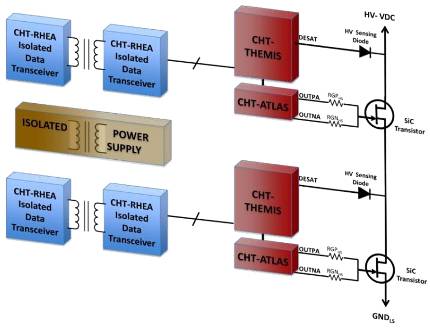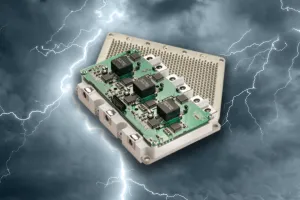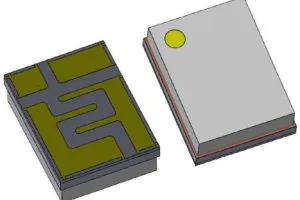Called Hades, it has been designed for 50kV/?s immunity and IC junction temperatures up to 225°C, and its evaluation board can drive two SiC mosfets on a DC bus voltage up to 1.2kV.
“The reference design is scalable up to +/-20A gate current, while the evaluation board features +/-4A,” said the firm. “A specific board flavour for normally-on JFETs will also be available, and other types of switching devices: normally-off JFETs, bipolar transistors and IGBTs; can be supported with minor changes.”
According to the Cissoid, demonstrators have included a 3kW dc-dc buck converter with SiC mosfets operating in 175°C ambient and switching at 150kHz with rise times of less than 25ns.
Claimed maximum power efficiency for designs based on the reference is over 98% at switching frequencies above 100kHz.
Applications are expected in high-power motor drives, battery chargers and power distribution; in railway, aircraft, renewable energy and electric vehicle markets.
All Hades active components are guaranteed for normal operation from -55 to +225°C. 
“The magnetic isolation of the power supply also sustains reliably high temperatures, as opposed to opt couplers,” said the firm.
On-board protection includes under voltage lockout and desaturation detection that monitors the drain-to-source voltage of the power transistor to detect over-currents.
The board also implements active Miller clamping to prevent parasitic turn-on of the power switch.
The evaluation kit, EVK-HADES, is available for €7,500.
 Electronics Weekly
Electronics Weekly



